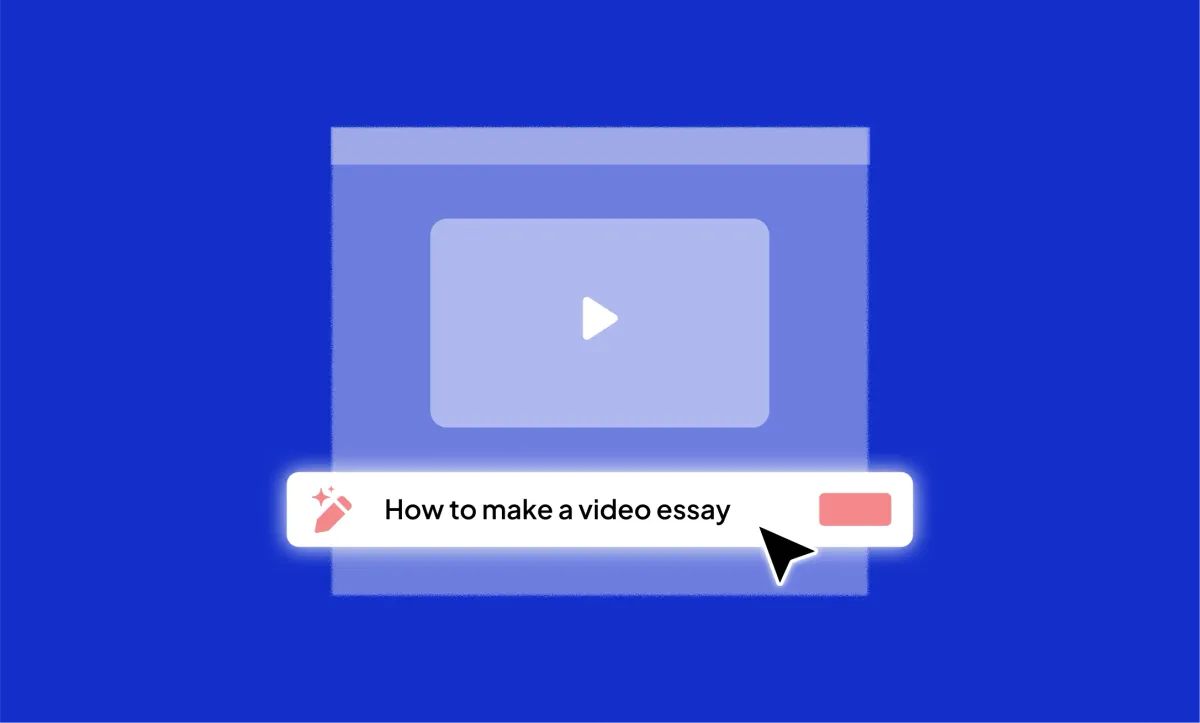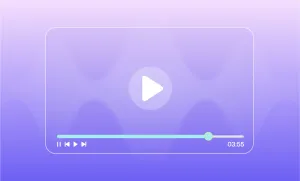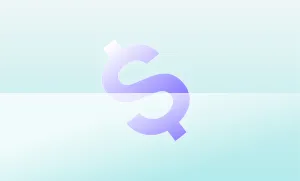Sometimes, a video comes along that shifts your perspective entirely. And it’s because it’s not just any regular video. It’s almost like a crash course in philosophy or visual storytelling, throwing ideas, stories, and visuals at you that make you think in ways you haven’t before.
If you’ve ever watched one, you know exactly how powerful they can be.
But… if you’re actually thinking of making one, you might be worried about the challenge of editing something that can sometimes span the length of hours.
Instead of letting that overwhelm stop you, let’s show you how to make a video essay from scratch and bring your ideas to life through this engaging audiovisual medium.
First things first: what is a video essay?
A video essay is a unique way to tell a story. It mixes visuals, narration, sound, and sometimes old footage to explore ideas or share personal reflections.
Unlike documentaries or traditional films, video essays tend to be more experimental. They pair subjective thoughts with striking combinations of images and concepts.
Topics can range from film theory and art history to politics, philosophy, or even everyday moments. Think of them as essays brought to life—structured, yet cinematic, engaging both your mind and your senses.
Key features of a video essay
As a format, a video essay thrives on how adaptable it can be, allowing creators to push boundaries and experiment with how ideas are communicated. It’s an art form that invites both creators and audiences to rethink the way we see and interpret the world around us, with some key features being:
- Blend of visuals and narration: Combines moving images, text, and voiceover to analyze or tell a story.
- Creative structure: Often nonlinear or experimental, reflecting the creator's unique perspective.
- Diverse topics: Covers anything from personal reflections to deep cultural critiques.
How to make a video essay from scratch?
Creating a video essay might seem like a big undertaking, but once you break it down into manageable steps, it becomes a rewarding process that lets your creativity shine.
Whether you’re exploring a niche topic or creating a thought-provoking essay video for your audience, this guide will walk you through the entire process, from brainstorming ideas to the final edit.
1. Brainstorming Your Idea
Every great video essay starts with a compelling idea. Ask yourself:
– What do I care about or want to explore?
– What story or argument am I trying to tell?
– Who is my target audience?
Some popular video essay topics include analyzing films, cultural trends, historical events, or personal reflections. The key is finding a subject that excites you and has enough depth to engage viewers. Once you have your idea, spend time researching and gathering resources like images, video clips, or archival footage to support your perspective.
2. Writing a Video Essay Script
A well-written video essay script is the backbone of your project. It helps you organize your thoughts, structure your narrative, and ensure your ideas flow seamlessly. Start by outlining your essay with the following in mind:
- Introduction: Hook your audience with a captivating opening. You could use an interesting fact, a bold question, or a surprising statement.
- Body: Present your argument or exploration in sections. Break it into digestible chunks, using storytelling techniques like anecdotes or vivid descriptions to keep it engaging.
- Conclusion: Wrap up with a strong takeaway or call to action that leaves your viewers thinking.
With Podcastle, you can record your narration directly in the Recording Studio, which allows for high-quality audio capture. Need a quick revision? Use Podcastle’s Revoice tool to create an AI version of your voice and easily make edits without re-recording.
3. Gathering and Organizing Visuals
The power of a YouTube essay lies in its visuals. Your video should complement your narration, either by illustrating your points or adding emotional weight. Here’s how to make your visuals impactful:
– Use relevant clips, photos, or graphics to support your argument.
– Edit footage with precision to maintain rhythm and flow.
– Avoid overloading your audience with excessive visuals (simple is often best)
Podcastle’s Video Editor makes this process a breeze. With its multi-track timeline and drag-and-drop interface, you can seamlessly layer visuals, audio, and text. You can even enhance the quality of your footage using the AI Video Enhancer tool.
4. Editing Your Video Essay
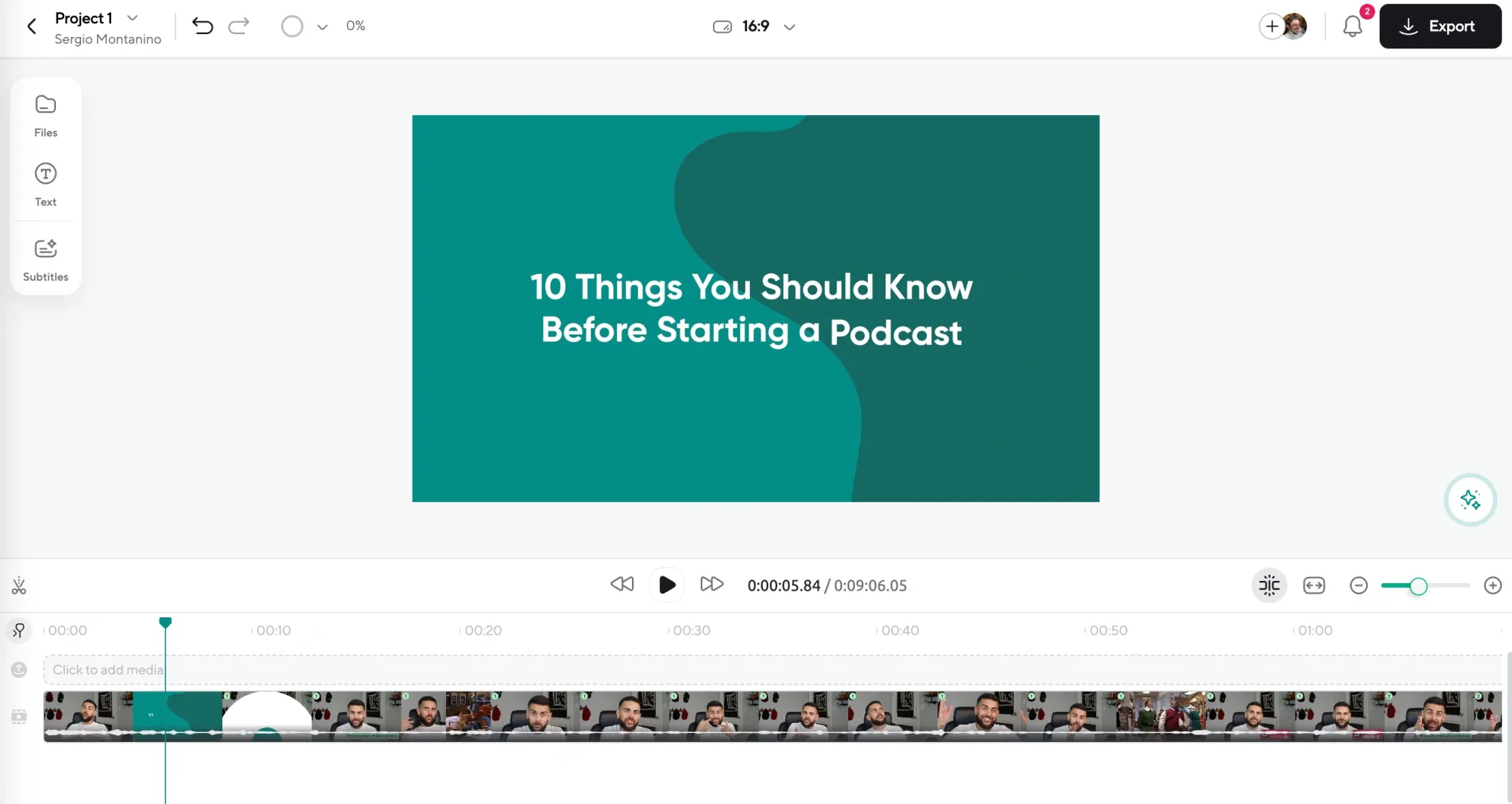
This is where your project comes to life. During editing, focus on pacing, transitions, and overall storytelling. Podcastle’s browser-based editor gives you total creative control, whether you’re fine-tuning a single track or juggling multiple layers of video and audio. Use features like:
– AI Subtitles to generate captions that make your video more accessible.
– Magic Dust to clean up audio and remove background noise.
– Cinematic Blur to give your visuals a polished, professional look.
Creating a great video essay starts with dynamic pacing. By mixing fast and slow moments, you can keep your audience engaged from start to finish. Music is another powerful tool—it helps set the tone and builds emotional connections with your viewers. For an extra boost, Podcastle’s music library offers background tracks that can elevate your production. Once your structure is solid, it’s time to refine the details. Trim unnecessary filler, polish transitions, and make sure every element fits together seamlessly for a cohesive and impactful final product.
5. Final Touches and Publishing
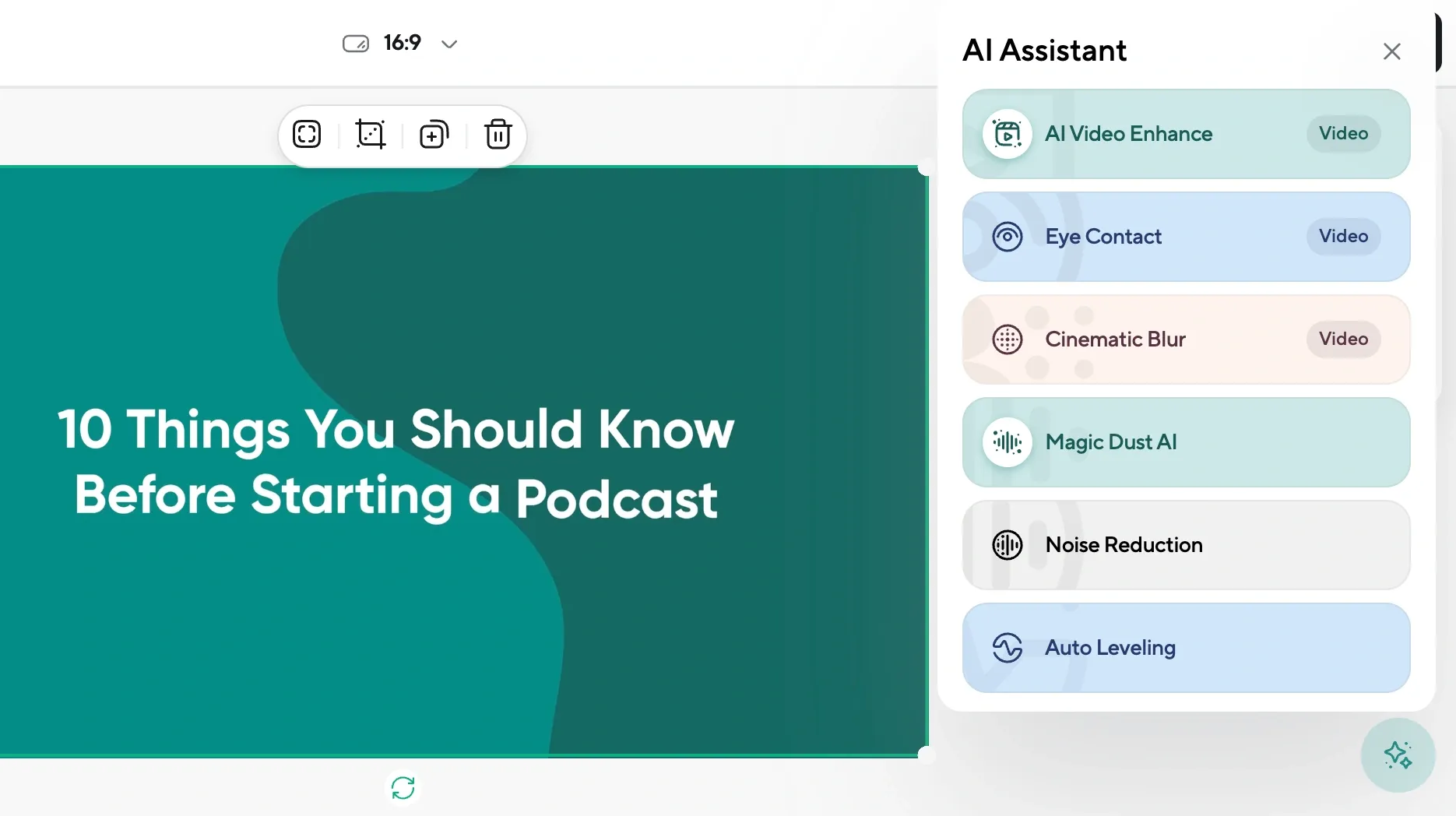
Once your essay video is polished, it’s time to share it with the world! With Podcastle, exporting is simple—choose your preferred quality and format, and your video will be ready to upload. Need social media clips? Use the editor to quickly cut longer videos into bite-sized highlights for platforms like Instagram or TikTok.
Before you hit publish, double-check:
– Is your narrative clear and engaging?
– Do the visuals align with your script?
– Have you included captions and music to enhance accessibility and impact
When creating a video essay, simplicity should always be a priority. Too many effects or visuals can overwhelm your audience, so it’s best to keep things clean and focused. That said, don’t shy away from experimenting. Video essays are all about creativity, so feel free to explore unconventional formats or unique ideas. At the heart of it all, though, is storytelling. A strong script paired with well-timed visuals will always have a greater impact than flashy editing alone.
Video Essay Examples to Get Inspired From
Looking for good video essay examples? We’ve rounded up a selection of YouTubers who craft insightful and engaging pieces that are well worth your time. Whether you're exploring techniques for your own project or simply want to enjoy a well-told narrative, these creators will get you inspired. Take a look—you might discover your next favorite channel!
1) ContraPoints
ContraPoints, led by the brilliant Natalie Wynn, is a masterclass in weaving philosophy, sociology, and art into mesmerizing video essays. Known for tackling complex social and cultural issues, Natalie combines sharp analysis with stunning visuals, rich set designs, and original characters. Each video feels like stepping into a theatrical world where ideas come alive, making even the densest topics engaging and accessible.
Her essays often explore subjects like gender, identity, and online discourse with nuance and empathy, providing viewers with perspectives they might not have considered. Videos like The Aesthetic and Cringe are iconic examples of how deeply she dives into her themes.
2) Super Eyepatch Wolf
Super Eyepatch Wolf takes a different approach, blending his love for anime, video games, and pop culture into incredible video essays. Rather than just explaining why something is good or bad, he explores the why behind our emotional connections to media.
We suggest taking a look at his The Fall of the Simpsons and The Bizarre World of Fake Martial Arts video essays to learn from him the art of uncovering fascinating stories within familiar topics.
He pairs this with a calm, reflective tone that keeps you hooked throughout. If you’re someone who loves to look beyond the surface of your favorite shows or games, his channel is packed with gems waiting to be discovered.
3) Folding Ideas
Folding Ideas, created by Dan Olson, offers some of the most insightful and well-crafted video essays you’ll find online. Dan takes on topics ranging from filmmaking and digital culture to conspiracy theories, presenting them with a blend of thorough research and genuine curiosity. His style is refreshingly approachable, making even the most complex ideas feel accessible without losing their depth.
One of his standout works, In Search of a Flat Earth, explores the world of conspiracy theories with a careful balance of critique and compassion. It’s the kind of essay that not only unpacks the subject but also leaves you reflecting on its broader implications. Dan’s ability to navigate intricate topics without overwhelming the viewer is what makes his content both engaging and thought-provoking. If you’re looking for video essays that truly expand your perspective, Folding Ideas is a must-watch.
4) Jacob Geller
Jacob Geller’s video essays are a blend of personal reflection, cultural commentary, and an exploration of the human condition. He often uses video games as a lens to examine broader social themes, but his insights extend far beyond the gaming world. Each essay feels deeply personal, as though he’s inviting you into his thought process to explore these ideas alongside him.
In his video Fear of Depths, Geller masterfully connects our innate fears with game design and real-world psychology. His ability to weave personal anecdotes with broader concepts makes his work feel intimate yet universally relevant. For anyone who appreciates a more introspective approach to video essays, Jacob Geller’s channel is a rewarding experience.
5) Pop Culture Detective
Pop Culture Detective, created by Jonathan McIntosh, examines the hidden messages in movies, TV shows, and other forms of media. His essays focus on topics like masculinity, gender roles, and representation, offering critical insights that challenge conventional narratives.
In videos like The Adorkable Misogyny of The Big Bang Theory, McIntosh highlights the subtle ways media shapes our perceptions of the world. His calm and measured tone ensures that even heavy subjects feel approachable, and his arguments are always backed by clear examples.
If you’re interested in uncovering the deeper layers of pop culture, this channel offers a thoughtful and eye-opening perspective.
Fun Fact: A brief history of video essays
The origins of the video essay can be traced back to experimental filmmakers like Dziga Vertov, whose groundbreaking Man with a Movie Camera (1929) used montage to present a kaleidoscopic view of Soviet urban life. Vertov's exploration of how images could create meaning influenced the essayistic approach to filmmaking.
In the mid-20th century, Orson Welles experimented with the essay form in F for Fake (1973), blending documentary, performance, and playful commentary to question truth, art, and authorship. Around the same time, Alain Resnais brought a poetic sensibility to nonfiction cinema with works like Night and Fog (1956), a haunting meditation on the Holocaust, which paired reflective narration with powerful archival footage.
The accessibility of digital editing tools in the 2000s democratized the video essay, leading to a wave of online creators who redefined the genre for platforms like YouTube and Vimeo.
Trip Down Memory Lane: The First Video Essays
If you’re completely new to this video format, it’s always a good idea to look back at its history and watch some of the video essay classics. Here are some great video essay examples that paved the way for the genre and continue to inspire creators today.
Chris Marker - Sans Soleil (1983)
Chris Marker’s Sans Soleil (1983) is a masterpiece of the video essay genre, blending travelogue, philosophical meditation, and experimental cinema into a unique audiovisual experience. It’s often cited as one of the best examples of what a video essay can achieve—mixing personal reflection, social commentary, and imaginative storytelling.
The film is structured as a series of "letters" narrated by a woman, supposedly from a fictional cameraman named Sandor Krasna, who travels the globe documenting everything from Tokyo’s neon-lit streets to the rituals of Guinea-Bissau.
Adam Curtis - The Century of the Self (2002)
Curtis is a pioneer of the video essay form, using archival footage and voiceover to construct sweeping narratives about society, psychology, and power. In The Century of the Self, he investigates how Sigmund Freud’s theories were adapted by PR firms to shape modern consumerism.
Kogonada - What is Neorealism? (2014)
Kogonada, known for his own narrative films like Columbus, began his career crafting video essays. What is Neorealism? is a poetic exploration of Italian neorealism, focusing on Vittorio De Sica’s Bicycle Thieves. It dissects the film’s visual language and storytelling with a lyrical sensibility.
Agnes Varda - The Gleaners and I (2000)
Agnes Varda’s work blurs the line between documentary and video essay. The Gleaners and I is a deeply personal exploration of the concept of gleaning—collecting what’s left behind after harvests—and its metaphorical implications for life, art, and filmmaking. Like Marker, Varda intertwines global issues with her own reflections, making the film as much about her process as its subjects.
Harun Farocki - Images of the World and the Inscription of War (1988)

Farocki’s essay film examines the role of images in shaping history and war, dissecting aerial reconnaissance footage and archival material to uncover hidden truths. In this essay, Farocki emphasizes the interplay between technology, perception, and memory.
Patrick Keiller - London (1994)
Patrick Keiller’s London is a one-of-a-kind experimental documentary that offers a reflective and often satirical take on the state of England’s capital during the early 1990s. The film combines static, beautifully composed shots of the city with a fictional narrator's musings, read by actor Paul Scofield. This narrator (referred to only as "Robinson") guides the viewer through London’s geography, architecture, and history while delivering sharp social and political commentary.
John Berger - Ways of Seeing (1972)
Although technically a TV series, Berger’s exploration of art, perception, and ideology functions like an extended video essay. The series is structured as four 30-minute episodes, each tackling a different theme. Berger uses a direct, conversational tone to unpack complex ideas, such as how the “male gaze” shapes representations of women in Western art, or how the commercialization of art changes its meaning. This easy-to-follow yet thought-provoking style feels like an early version of the modern YouTube video essay.
Final Thoughts
Video essays are your chance to merge creativity with analysis, offering a unique way to express your perspective on the world. With Podcastle’s powerful yet easy-to-use tools, creating a video essay is no longer reserved for professionals.
Whether you’re crafting your first YouTube essay or perfecting your storytelling skills, the platform equips you with everything you need to produce studio-quality content that stands out.
So, what will you create?
